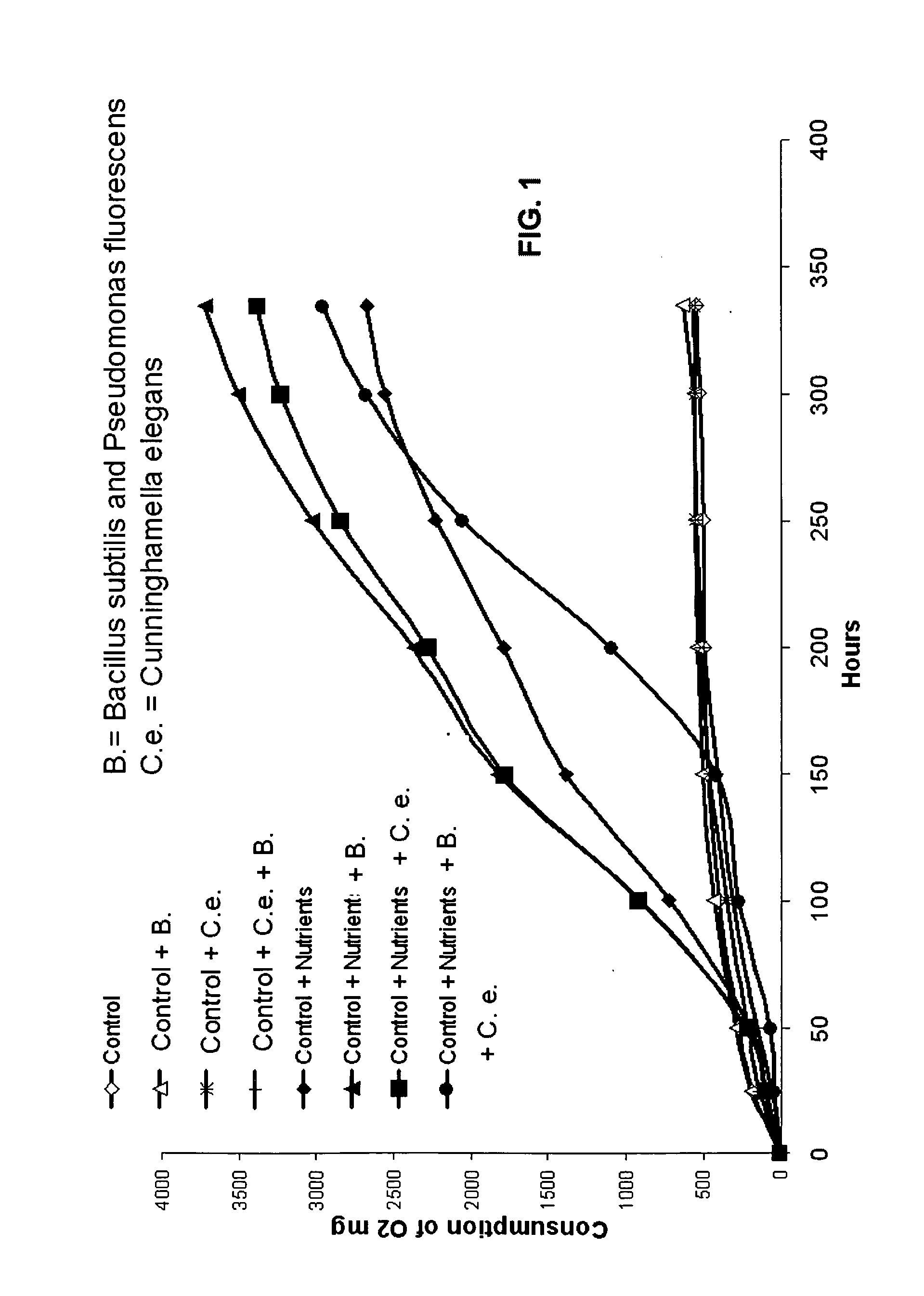Microbial degradation of water-borne paint containing high levels of organic solvent
- Summary
- Abstract
- Description
- Claims
- Application Information
AI Technical Summary
Benefits of technology
Problems solved by technology
Method used
Image
Examples
example 1
[0064]Overspray organic solvent-laden water-borne paint from an automobile factory which uses excessive solvent in their spray operation is treated by addition of the fungi C. elegans and monitored over a period of time for chemical oxygen demand (COD) in an attempt to reduce the COD of the water. The COD of the water is not significantly reduced.
examples 2-9
[0065]Overspray organic solvent-laden water-borne paint from Example 1 are treated by a variety of means and the COD determined. Example 2 is substantially the same as Example 1 above, so that the water contains the fungi C. elegans. In examples 3-5, the water contains the fungi C. elegans to which is added the bacterial species B. subtilis, P. fluorescens or a mixture of is these two bacterial species, as identified in the table below. In examples 6, 7, 8, and 9, in addition to the foregoing microorganisms (both fungal and bacterial), two micronutrients are added, in the amounts indicated in the table below: nitrogen, in the form of urea, and phosphorous, in the form of phosphoric acid. As shown in the table below, the reduction in COD is greatly improved in these examples, as compared to the examples 3-5 in which no additional micronutrients are added. Thus, the unexpected benefit of a significantly improved reduction in the COD of the water in the system is shown. This effect was...
PUM
 Login to View More
Login to View More Abstract
Description
Claims
Application Information
 Login to View More
Login to View More - R&D
- Intellectual Property
- Life Sciences
- Materials
- Tech Scout
- Unparalleled Data Quality
- Higher Quality Content
- 60% Fewer Hallucinations
Browse by: Latest US Patents, China's latest patents, Technical Efficacy Thesaurus, Application Domain, Technology Topic, Popular Technical Reports.
© 2025 PatSnap. All rights reserved.Legal|Privacy policy|Modern Slavery Act Transparency Statement|Sitemap|About US| Contact US: help@patsnap.com



